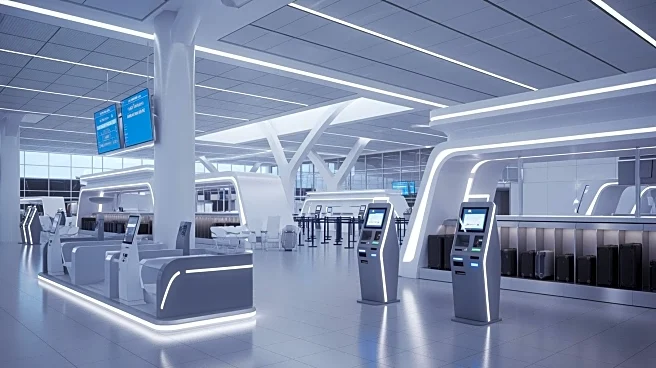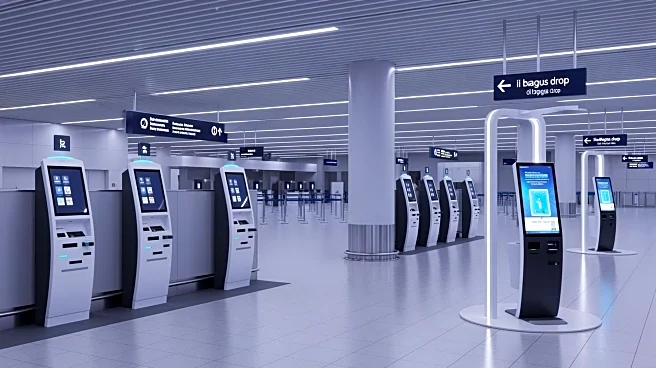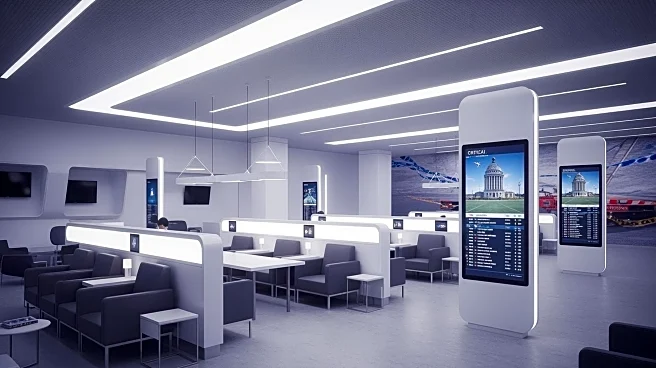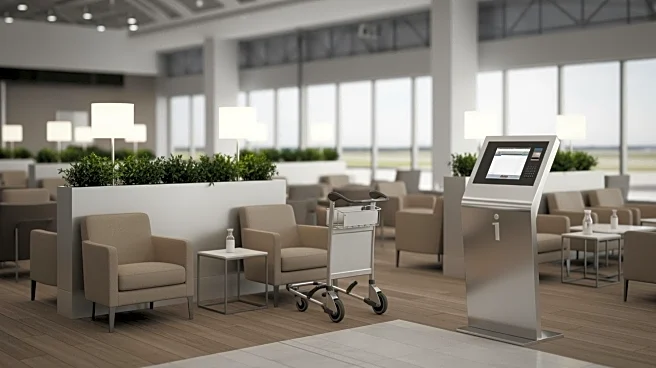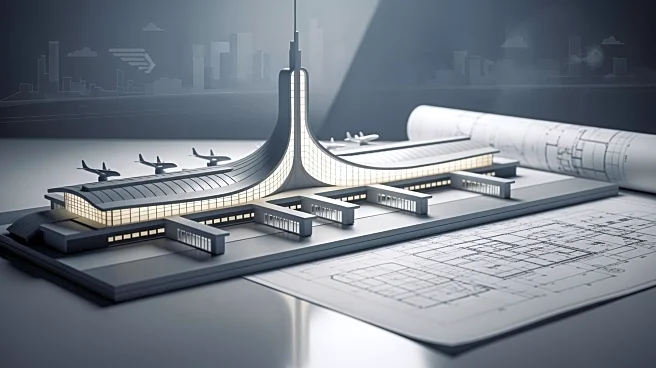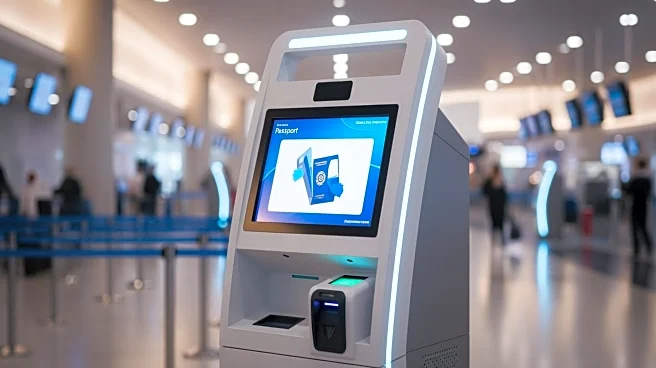What's Happening?
Delhi Airport's Terminal 2 is set to reopen after a seven-month closure for renovations. The refurbished terminal, inaugurated by Civil Aviation Minister K Rammohan Naidu, aims to transform the airport
into a world-class transit hub. The terminal now features advanced technologies such as self-baggage drop facilities, virtual information desks, and DigiYatra across all entry points. It also includes six state-of-the-art passenger boarding bridges with autonomous docking technology, enhancing efficiency and comfort for travelers. The terminal's design has been upgraded with modern skylights and a high-resolution Flight Information Display System to improve the travel experience.
Why It's Important?
The reopening of Terminal 2 at Delhi Airport represents a significant advancement in airport infrastructure, aiming to streamline passenger flow and enhance the travel experience. The integration of technology-driven solutions like self-baggage drop and virtual information desks reflects a shift towards more efficient and user-friendly airport operations. This development could set a precedent for other airports globally, encouraging the adoption of similar technologies to improve passenger satisfaction and operational efficiency. The focus on digital travel solutions aligns with broader trends in the aviation industry towards automation and smart technology.
What's Next?
As Terminal 2 becomes operational, it is expected to handle increased passenger traffic, potentially influencing flight schedules and airport logistics. The success of these technological implementations may lead to further upgrades in other terminals and airports, both domestically and internationally. Stakeholders, including airlines and airport authorities, will likely monitor the impact of these changes on passenger experience and operational efficiency, potentially driving further innovation in airport design and services.
Beyond the Headlines
The technological advancements at Terminal 2 raise considerations about the future of airport operations, including the role of automation in reducing human intervention and improving efficiency. Ethical and privacy concerns related to digital travel solutions, such as facial recognition, may require careful management to ensure passenger trust and compliance with regulations. Long-term, these developments could influence cultural perceptions of air travel, emphasizing convenience and technological integration.
